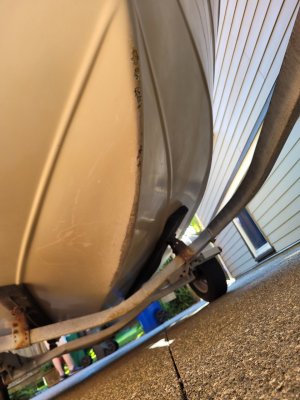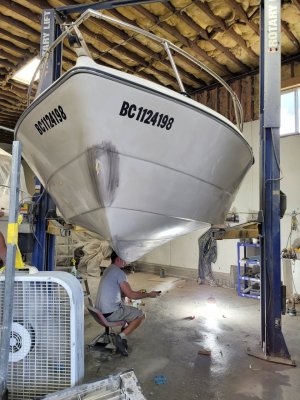Hey all, I have virtually no experience maintaining or restoring gelcoat, and looking for advice on a general game plan for my boat. I have some light oxidation below the rub rail, and a bit heavier above the rub rail I think. Also have plenty of war wounds from the previous owner (and a few of my own). Dock rash mostly, scratches some surface some deep. A few dings and pinholes down to the mat. Interested in how you guys with more experience would approach this?
This past weekend I tried a pass on the sides of the boat with my 6"dual action buffer and 3M Perfect It Medium. You can see the difference between the sides of the hull I did, and the stern that is so far untouched here.
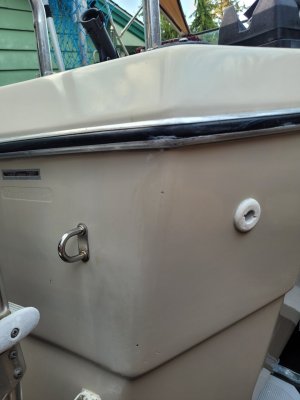
And here is a wider shot to get a overall feel. Below the rub rail to lower chine was done. Bottom of hull and deck above the rub rail not touched yet.
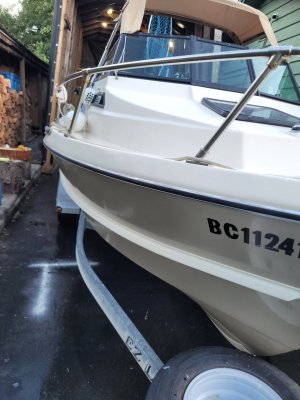
Here is a close up of an area post compounding. It is pretty representative of the types of imperfections that exist on this hull.
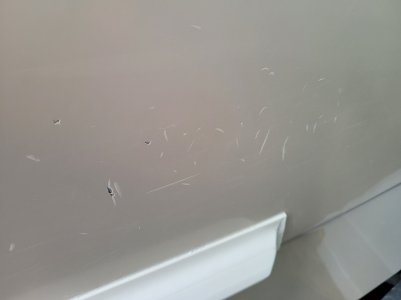
So I guess looking for advice on order of operations here to not make things worse, and avoid redoing work or unnecessary steps. What is the least aggressive approach to dealing with the lighter scratches in the above pick (sanding or compounding?) And when do I need to get into filling and colour matching gelcoat? And little tricks of the trade I am probably not aware of? I've been reading up and watching YouTube, Boatworks today etc but hands on experience is theoretical at this point.
This past weekend I tried a pass on the sides of the boat with my 6"dual action buffer and 3M Perfect It Medium. You can see the difference between the sides of the hull I did, and the stern that is so far untouched here.

And here is a wider shot to get a overall feel. Below the rub rail to lower chine was done. Bottom of hull and deck above the rub rail not touched yet.

Here is a close up of an area post compounding. It is pretty representative of the types of imperfections that exist on this hull.

So I guess looking for advice on order of operations here to not make things worse, and avoid redoing work or unnecessary steps. What is the least aggressive approach to dealing with the lighter scratches in the above pick (sanding or compounding?) And when do I need to get into filling and colour matching gelcoat? And little tricks of the trade I am probably not aware of? I've been reading up and watching YouTube, Boatworks today etc but hands on experience is theoretical at this point.

